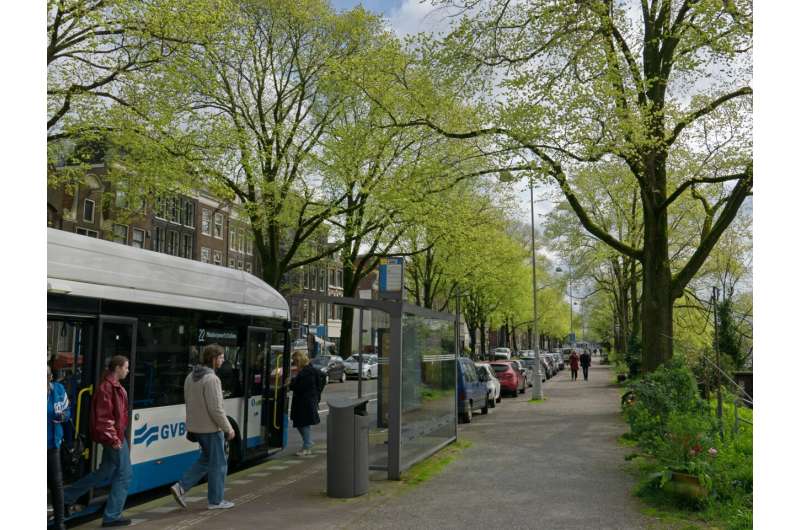
What a tree needs to grow and how it affects its surroundings vary from species to species. This makes it increasingly important for cities to adapt the urban tree cover to local conditions.
A team at the Technical University of Munich (TUM) has developed the online tool CityTree. Cities, municipalities and interested individuals can use it to find out how 12 common tree species are growing in 34 German cities and how they will benefit the local climate in the future.
Trees reduce heat stress on hot days, emit oxygen into their surroundings and bind climate-damaging CO2. This adds up to a decisive contribution towards maintaining the best possible quality of life in cities as the world heats up. A team working with the forest scientist Prof. Thomas Rötzer has investigated the advantages of selected tree species for the urban climate and the conditions under which they thrive.
To conduct the study, the researchers measured more than 5,000 urban trees throughout Germany, took samples from them and analyzed their surroundings. The focus was on lime trees, locust trees, plane trees and nine other species that make up 60% of the urban tree cover in Germany.
The data were then used to create an interactive model called CityTree. Access to the tool is free of charge. It is mainly intended for cities and municipalities, but can also be used by ambitious hobby gardeners when planning tree plantings in their own gardens.
Creating virtual trees
Users can define a virtual tree with just a few clicks. After choosing from among 34 cities and 12 tree species and defining such characteristics as soil type, the level of soil sealing and light exposure, the user sees how much CO2 the tree will bind, how much it will cool its surroundings and the quantity of water it will use.
The preview can also reflect various climate scenarios. The period from 1991 to 2000 simulates tree performance in the current climate, while 2003 represents a dry year. For the period from 2081 to 2090, the user can choose between climate scenarios based on 1°C or 4.8°C of global heating.
The data illustrate the importance of detailed planning for urban greenery. Cities like Berlin and Würzburg, with low precipitation and high temperatures, benefit more from plane trees and other drought-tolerant species. A city like Munich, with relatively high rainfall, can plan for species such as small-leaved lime and horse chestnut trees if the tree pit is large enough.
Planning for 2081 starts now
Although 2081 might seem like a long way off, “It is urgent for cities to take action now and critically assess their tree cover. Planting decisions shouldn’t be based solely on aesthetics,” says Thomas Rötzer.
“A tree has to grow for many years before it has a noticeable impact on urban climate. In the past, cities and municipalities lacked concrete information for planning optimized tree plantings and to assess the performance of existing trees. Through the app, we have converted scientific data into a usable format with practical benefits that can address this urban planning shortfall.”
The research team recommends that local authorities develop a systematic overview of their trees. So far, there are only a few resources that would represent an “urban tree cadastre.” With this knowledge, cities could establish programs with concrete targets and measures for optimal adaptation to the challenges of climate change.
The research team is currently working toward that objective. Using satellite images, they are surveying the tree population of Munich and assessing its potential growth and the benefits to the urban climate. These data can then be used for the sustainable management of the city’s tree cover.
Provided by
Technical University Munich
Planning the urban climate of the future (2024, August 6)
retrieved 6 August 2024
from https://phys.org/news/2024-08-urban-climate-future.html
part may be reproduced without the written permission. The content is provided for information purposes only.